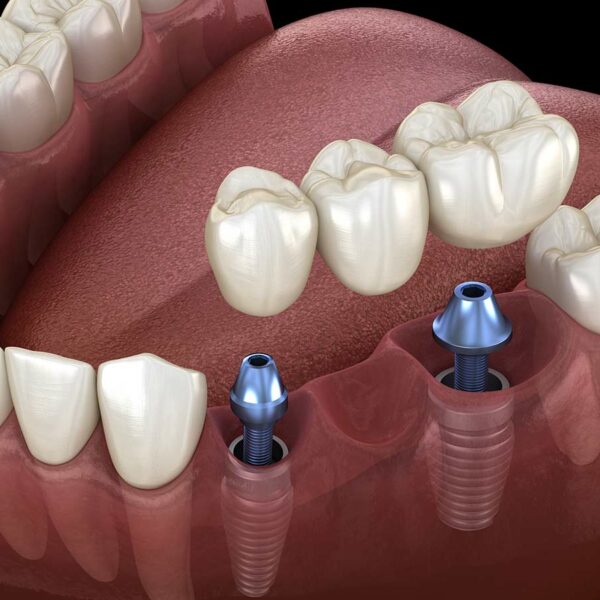
In its broadest sense, “breast cancer” refers to cancer cells that originate from different parts of the breast and grow uncontrollably. The three most important parts of the breast are the lobules (glands that produce milk), ducts (tubes that carry milk to the nipple), and connective tissue (the fatty tissue that holds everything together) (2).
When breast cancer spreads to other areas of the body, it is called metastasis.
Aside from skin cancer, breast cancer is the most common cancer in women. According to the American Cancer Society (ACS), the average overall risk of a woman in the United States developing breast cancer at some point in her life is 13%. By 2020, the ACS estimates that more than 276,000 new cases of invasive breast cancer and nearly 49,000 new cases of non-invasive breast cancer will be diagnosed. More than 42,000 women die from breast cancer each year(3).
Because this disease is so common, it is important to understand what breast cancer is, the types, how it is diagnosed, and treatment strategies.
Types of breast cancer
There are many different types of breast cancer, but they are generally described by two factors: where the cancer starts and whether or not the cancer has spread.
In terms of origin, most breast cancers are “carcinomas,” meaning they begin in the epithelial cells that line tissues and organs throughout the body. Carcinomas in the breast are usually referred to as “adenocarcinoma,” meaning they originate in the cells of the milk ducts or milk-producing glands (lobules)(1).
Then there are “in situ” and “invasive” breast cancers. In situ breast cancer is cancer in a milk duct that has not yet spread to the rest of the breast tissue – also called ductal carcinoma in situ or “DCIS”. Invasive breast cancer is any type of breast cancer that has spread to surrounding breast tissue. Invasive breast cancer is usually either invasive ductal carcinoma or invasive lobular carcinoma. Approximately 70-80% of all breast cancers are classified as invasive ductal carcinoma (1).
Specific types of invasive breast cancer
Certain types of invasive breast cancer have specific characteristics or progress differently, which affects their treatment and outlook. These cancers occur less frequently but are usually more serious than other forms:
- Triple-negative breast cancer. An aggressive, difficult-to-treat form of invasive breast cancer. Accounts for 15% of all breast cancers.
- Inflammatory breast cancer. A rare form of invasive breast cancer that accounts for about 1% to 5% of all breast cancers.
Rare types of breast cancer
In rare cases, breast cancers can affect other types of cells in breast tissue. These may require different treatment strategies (1):
- Paget’s disease in the breast. Cancer that originates in the excretory ducts and spreads to the skin of the nipple and areola. Accounts for 1-3% of all breast cancers.
- Angiosarcoma. Cancer that starts from the cells lining blood or lymph vessels. Makes up less than 1% of all breast cancers.
- Phyllodes tumor. Tumors that form in the connective tissue of the breast. Phyllodes tumors are rarely cancerous.
Stages of breast cancer
If you have received a breast cancer diagnosis, your doctor will “stage” your cancer to determine the extent of the disease. The stage is determined after a physical exam and the initial results of a mammogram or other imaging test, but may be adjusted after laboratory reports from a biopsy or surgery. Staging is an important step in determining the appropriate treatment modality (4).
Your doctor will use the “T-N-M scale” to determine the stage of the breast cancer:
- T. Size of the tumor
- N. Involvement of nearby lymph nodes
- M. Metastasis – or whether the cancer has spread to other parts of the body.
There are five stages of breast cancer – represented by 0 and the Roman numerals I – IV.
Stage 0
Very early stages of breast cancer – either non-invasive or precancerous. In stage 0 cases, there is no evidence that cancer cells or abnormal cells have invaded nearby normal tissue.
Stage I
Earliest stages of invasive breast cancer – cancer cells have spread to nearby normal tissue but remain in a small, confined area. Within stage I, there are two subcategories:
Stage 1A. A tumor in the breast up to 20 millimeters in size, with no cancer in the lymph nodes.
Stage IB. Either:
- A tumor in the breast less than 20 millimeters in size and small collections of cancer cells in the lymph nodes; or
- No tumor in the breast, but small collections of cancer cells in the lymph nodes.
Stage II
Cancer that remains in a limited region but has spread. Stage II is classified primarily by the extent to which the cancer has spread to the lymph nodes. Within stage II, there are two subcategories:
Stage IIA. Cancer characterized by any of the following.
- The cancer has spread to the lymph nodes under the arm, with or without a breast tumor (up to 20 millimeters)
- Cancer has not spread to the lymph nodes, but there is a breast tumor of 20-50 millimeters.
Stage IIB. Cancer characterized by any of the following:
The cancer has spread to 1-3 nearby lymph nodes, and there is a tumor 20-50 mm in size in the breast.
The cancer has not spread to lymph nodes, but the tumor in the breast is larger than 50 millimeters.
Stage III
Cancer that has spread further in the breast or the tumor is larger than in the earlier stages. Stage III is divided into three subcategories:
Stage IIIA. Cancer characterized by any of the following:
- Cancer has spread to 4-9 nearby lymph nodes, with or without breast tumor.
- Cancer has spread to 1-3 lymph nodes and a breast tumor greater than 50 millimeters in size.
Stage IIIB. The cancerous tumor has spread behind the breast to the chest wall. Other features of this stage are:
- The cancer has spread to the skin, causing inflammation or swelling.
- The cancer has broken the skin, causing an open wound or ulcer
- The cancer has spread to up to nine lymph nodes under the arm or near the breastbone.
Stage IIIC. No tumor or a tumor of any size in the breast with spread of the cancer to the following sites:
- 10 or more forearm lymph nodes
- Lymph nodes near the collarbone
- Combination of lymph nodes under the arm or near the breastbone
Stage IV
The most advanced form of the disease. At this stage, the cancer has spread to nearby lymph nodes as well as to distant parts of the body and may affect your organs or bones.
Overview
Your outlook after breast cancer depends on many factors, including the stage at which you were diagnosed with the cancer. Regardless of when you are diagnosed and what stage you are in, there are usually plenty of treatment options and paths you can take.
Sources
- American Cancer Society. Types of Breast Cancer. Last reviewed September 20, 2019.
- U.S. Centers for Disease Control and Prevention. What is Breast Cancer? Last reviewed September 14, 2020.
- American Cancer Society. How Common is Breast Cancer? Last reviewed January 8, 2020.
- Memorial Sloan Kettering Cancer Center. Stages of Breast Cancer. Accessed December 23, 2020.












